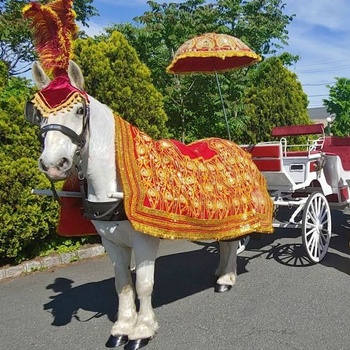
Traditionally, the groom leaves his home on the morning of his wedding and makes the journey to his bride’s hometown where the wedding will be held. It is customary for the groom to travel on a mare, accompanied by his family. This large procession with dancing and music is called the baraat.
During the baraat, the groom's sister or a younger female relative shakes a metal pot filled with coins and other noisemakers above his head to keep him awake! This tradition began when weddings in India were typically held in the evening and the groom often fell asleep.
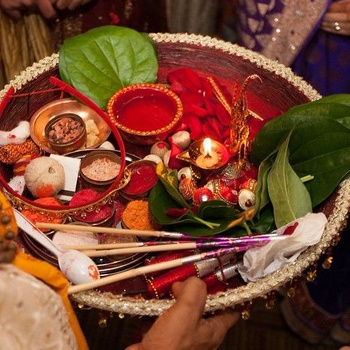
After the baraat, the groom is greeted at the door of the wedding venue by his future mother-in-law who will perform a series of poojas (prayers).
Before stepping into the venue, the groom must take off his shoes and per tradition, the bride’s sisters and cousins will attempt to steal his shoes. When the wedding ceremonies are over, the person(s) who were able to steal them demand money in exchange for the shoes so the groom can exit the venue.
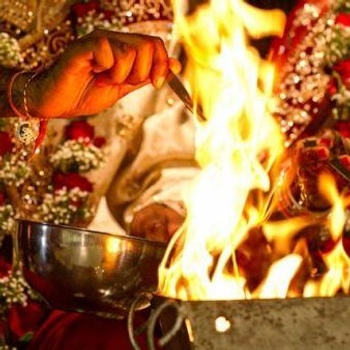
Don’t be surprised if the wedding ceremony isn’t a silent, somber affair. It is quite common for the families and friends to talk and laugh during the joyous ceremony. Family members will also often sing “improv” songs that describe the day’s events, the couple getting married, and even bring some humor by making jokes about family members.
Items used in wedding ceremony:
Flowers-signify beauty
Coconut-signifies fertility
Rice, jaggery, and other grains-signifies the food necessary for sustenance of life
Ghee (purified butter)-to feed the sacred fire
Kumkum (vermilion)- red powder to mark the forehead to signify good luck and show that your husband is with you
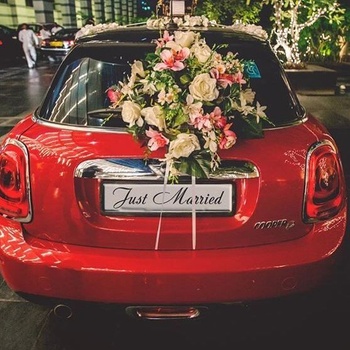
The Vidaai ceremony symbolizes the final stage of the wedding as the bride's parents say their tearful goodbye to their daughter as she begins her new life. The significance in this part of the wedding lies in the spectrum of emotions as her parents fill with joy and happiness for the new life she will lead, as well as sorrow and pain as they say goodbye to their little girl. The bride tearfully hugs her parents goodbye and touches the feet of her elderly family members as a gesture to request aashirwad (blessings), as she embarks on this journey.
When the vidaai is over, the bride and groom walk to their car where they will be met by the bride's sister(s) and other female relatives. These girls often playfully block the vehicle and refuse passage for the new couple until their new gijaji (brother-in-law), offers a monetary negotiation!
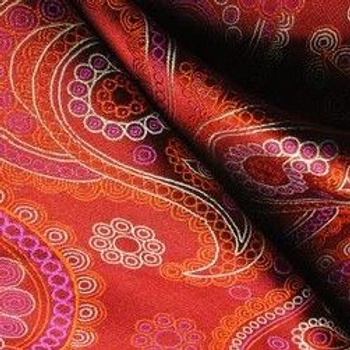
Either way, we want you to be comfortable! Feel free to ask us questions! Western or Indian clothing is welcome for all events.
When in doubt, dress up and cover up. While most Indian outfits are midriff bearing, short skirts are typically frowned upon. If you’re not sure what to wear, a long dress/skirt with or without sleeves is usually a good bet. For men, a suit or shirt and tie are a safe decision. And, don’t be afraid to wear some color!
If you'd like to wear something Indian, here is a quick guide:
All outfit styles come in a variety of colors and "fanciness" levels and can be worn to any event.
Saree: 3 pieces. Blouse, petticoat (skirt), saree wrap (6-9 yard long fabric that is draped around the body). A saree is more difficult to drape and carry but is most traditional. There are a variety of draping style options.Anarkali: 2-3 pieces. Pants, gown (with skirt that flares), optional dupatta (scarf). Very easy to put on and comfortable to wear.
Salwar: 3 pieces. Pants, top (length varies), dupatta (scarf). The pants vary in styles: Traditional salwar (bootcut); patiala (harem-like); chudidhar (tights).
Lengha/Choli: 3 pieces. Bottom skirt, crop top (blouse), dupatta (scarf). There are a variety of ways to drape the scarf to change the look. Easy to wear.
Online vendors
www.utsavfashion.com/
www.houseofindya.com/
www.kalkifashion.com/
www.indianweddingsaree.com/
www.cbazaar.com/
Amazon.com has outfits also. Be careful with the blouses-sometimes they come as unstitched fabric.Gentlemen
Kurta: 2-3 pieces. Pants, top, dupatta (scarf).